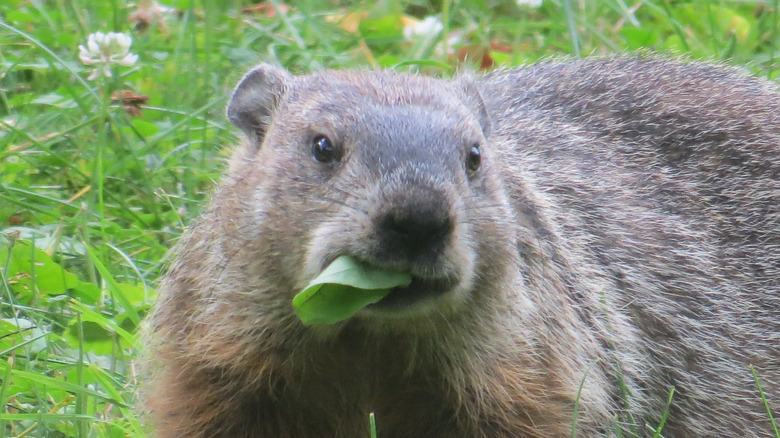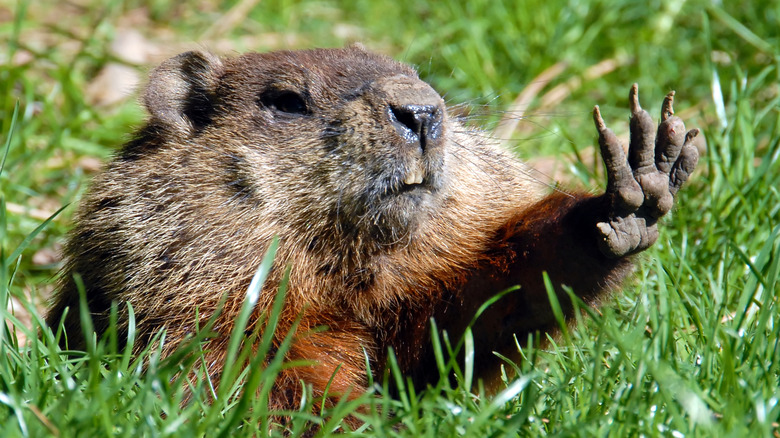Keep Hungry Groundhogs Out Of Your Yard And Garden With An Item You Already Own
They may look sweet and cuddly when they're on television predicting the end of winter, but when groundhogs are ransacking your garden, cute doesn't cut it. The furry rodents will unapologetically tear up your yard by digging burrows to secure a good meal. Next thing you know your landscape is peppered with volcano-shaped mounds of dirt and you're frantically scrolling for professional pest control. Take a beat. There's a way to keep hungry groundhogs out of your yard and garden with an item you already own — vinegar.
Groundhogs, also known as woodchucks, have voracious appetites — they eat up to 1 ½ pounds of vegetation per day. Given free access, they will attack your beloved fruit and vegetable garden, wiping it out in a single night. Moreover, groundhogs can cause additional property damage as they are inherently wired to clean and sharpen their teeth on tree stumps, log piles, wooden patio furniture, or other structures made of lumber. It's no wonder homeowners are eager to evict the insatiable omnivores. It's no secret vinegar can be a versatile cleaning tool, but you may be surprised to learn it's equally successful as a groundhog repellent. The reason – woodchucks have an acute sense of smell and are repulsed by the pungent aroma of this popular preservative.
How to use vinegar to repel groundhogs
To start, thoroughly inspect your property making note of all burrow entrances as they will be the focal point for the vinegar-repellent application. Most of the holes will be located in close proximity to food sources, such as gardens and flower beds. If you're uncertain about whether or not groundhogs are currently using the burrows, test for activity by covering the dirt cavities with grass, newspaper, or loose vegetation. Any disruption is a sign that the burrow is occupied and it's time to get out the vinegar.
The easiest process is to pour white vinegar directly into the groundhog burrow and around the perimeter of the entrance so the scent is unmistakably apparent. You can amplify the intensity of the fragrance by using apple cider vinegar, which features an even more offensive smell than white vinegar. A more aggressive approach combines vinegar with ammonia, cayenne pepper, and liquid dish soap or laundry detergent. Mix all of the ingredients together in a bowl, then transfer to a spray bottle. Next, liberally saturate the burrows' entry points making sure to reapply following a soaking rain.
As you conduct daily checks post-vinegar application, be sure to clear any debris or vegetation that may interfere with the scent distribution. Alternatively, you could also loosely seal the entrance to the burrows to trap the smell inside. While using vinegar will not eliminate groundhogs from your yard and garden overnight, diligent daily applications should ensure their eradication.

